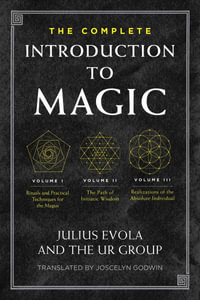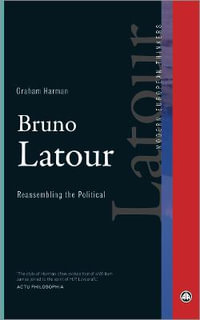| List of Figures | p. ix |
| Preface | p. xi |
| Acknowledgments | p. xxi |
| Radical Microsociology | |
| The Program of Interaction Ritual Theory | p. 3 |
| Situation rather than Individual as Starting Point | p. 3 |
| Conflicting Terminologies | p. 7 |
| Traditions of Ritual Analysis | p. 9 |
| Subcognitive Ritualism | p. 9 |
| Functionalist Ritualism | p. 13 |
| Goffman's Interaction Ritual | p. 16 |
| The Code-Seeking Program | p. 25 |
| The Cultural Turn | p. 30 |
| Classic Origins of IR Theory in Durkheim's Sociology of Religion | p. 32 |
| The Significance of Interaction Ritual for General Sociological Theory | p. 40 |
| The Mutual-Focus / Emotional-Entrainment Model | p. 47 |
| Ritual Ingredients, Processes, and Outcomes | p. 47 |
| Formal Rituals and Natural Rituals | p. 49 |
| Failed Rituals, Empty Rituals, Forced Rituals | p. 50 |
| Is Bodily Presence Necessary? | p. 53 |
| The Micro-Process of Collective Entrainment in Natural Rituals | p. 65 |
| Conversational Turn-Taking as Rhythmic Entrainment | p. 66 |
| Experimental and Micro-Observational Evidence on Rhythmic Coordination and Emotional Entrainment | p. 75 |
| Joint Attention as Key to Development of Shared Symbols | p. 79 |
| Solidarity Prolonged and Stored in Symbols | p. 81 |
| The Creation of Solidarity Symbols in 9/11 | p. 88 |
| Rules for Unraveling Symbols | p. 95 |
| Emotional Energy and the Transient Emotions | p. 102 |
| Disruptive and Long-Term Emotions, or Dramatic Emotions and Emotional Energy | p. 105 |
| Interaction Ritual as Emotion Transformer | p. 107 |
| Stratified Interaction Rituals | p. 111 |
| Power Rituals | p. 112 |
| Status Rituals | p. 115 |
| Effects on Long-Term Emotions: Emotional Energy | p. 118 |
| Emotion Contest and Conflict Situations | p. 121 |
| Short-Term or Dramatic Emotions | p. 125 |
| Transformations from Short-Term Emotions into Long-Term EE | p. 129 |
| The Stratification of Emotional Energy | p. 131 |
| Measuring Emotional Energy and Its Antecedents | p. 133 |
| Interaction Markets and Material Markets | p. 141 |
| Problems of the Rational Cost-Benefit Model | p. 143 |
| The Rationality of Participating in Interaction Rituals | p. 146 |
| The Market for Ritual Solidarity | p. 149 |
| Reinvestment of Emotional Energy and Membership Symbols | p. 149 |
| Match-Ups of Symbols and Complementarity of Emotions | p. 151 |
| Emotional Energy as the Common Denominator of Rational Choice | p. 158 |
| Material Production Is Motivated by the Need for Resources for Producing IRs | p. 160 |
| Emotional Energy Is Generated by Work-Situation IRs | p. 163 |
| Material Markets Are Embedded in an Ongoing Flow of IRs Generating Social Capital | p. 165 |
| Altruism | p. 168 |
| When Are Individuals Most Materially Self-Interested? | p. 170 |
| The Bottom Line: EE-Seeking Constrained by Material Resources | p. 171 |
| Sociology of Emotions as the Solution to Rational Choice Anomalies | p. 174 |
| The Microsociology of Material Considerations | p. 176 |
| Situational Decisions without Conscious Calculation | p. 181 |
| Internalized Symbols and the Social Process of Thinking | p. 183 |
| Methods for Getting Inside, or Back Outside | p. 184 |
| Intellectual Networks and Creative Thinking | p. 190 |
| Non-Intellectual Thinking | p. 196 |
| Anticipated and Reverberated Talk | p. 197 |
| Thought Chains and Situational Chains | p. 199 |
| The Metaphor of Dialogue among Parts of the Self | p. 203 |
| Verbal Incantations | p. 205 |
| Speeds of Thought | p. 211 |
| Internal Ritual and Self-Solidarity | p. 218 |
| Applications | |
| A Theory of Sexual Interaction | p. 223 |
| Sex as Individual Pleasure-Seeking | p. 228 |
| Sex as Interaction Ritual | p. 230 |
| Nongenital Sexual Pleasures as Symbolic Targets | p. 238 |
| Sexual Negotiation Scenes rather than Constant Sexual Essences | p. 250 |
| Prestige-Seeking and Public Eroticization | p. 252 |
| Situational Stratification | p. 258 |
| Macro- and Micro-Situational Class, Status, and Power | p. 263 |
| Economic Class as Zelizer Circuits | p. 263 |
| Status Group Boundaries and Categorical Identities | p. 268 |
| Categorical Deference and Situational Deference | p. 278 |
| D-Power and E-Power | p. 284 |
| Historical Change in Situational Stratification | p. 288 |
| An Imagery for Contemporary Interaction | p. 293 |
| Tobacco Ritual and Anti-Ritual: Substance Ingestion as a History of Social Boundaries | p. 297 |
| Inadequacies of the Health and Addiction Model | p. 299 |
| Tobacco Rituals: Relaxation / Withdrawal Rituals, Carousing Rituals, Elegance Rituals | p. 305 |
| Ritual Paraphernalia: Social Display and Solitary Cult | p. 317 |
| Failures and Successes of Anti-Tobacco Movements | p. 326 |
| Aesthetic Complaints and Struggle over Status Display Standards | p. 327 |
| Anti-Carousing Movements | p. 328 |
| The End of Enclave Exclusion: Respectable Women Join the Carousing Cult | p. 329 |
| The Health-Oriented Anti-Smoking Movement of the Late Twentieth Century | p. 331 |
| The Vulnerability of Situational Rituals and the Mobilization of Anti-Carousing Movements | p. 337 |
| Individualism and Inwardness as Social Products | p. 345 |
| The Social Production of Individuality | p. 347 |
| Seven Types of Introversion | p. 351 |
| Work-Obsessed Individuals | p. 351 |
| Socially Excluded Persons | p. 353 |
| Situational Introverts | p. 354 |
| Alienated Introverts | p. 355 |
| Solitary Cultists | p. 356 |
| Intellectual Introverts | p. 357 |
| Neurotic or Hyper-Reflexive Introverts | p. 360 |
| The Micro-History of Introversion | p. 362 |
| The Modern Cult of the Individual | p. 370 |
| Notes | p. 375 |
| References | p. 417 |
| Index | p. 435 |
| Table of Contents provided by Ingram. All Rights Reserved. |
























